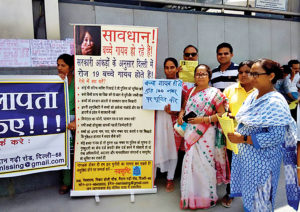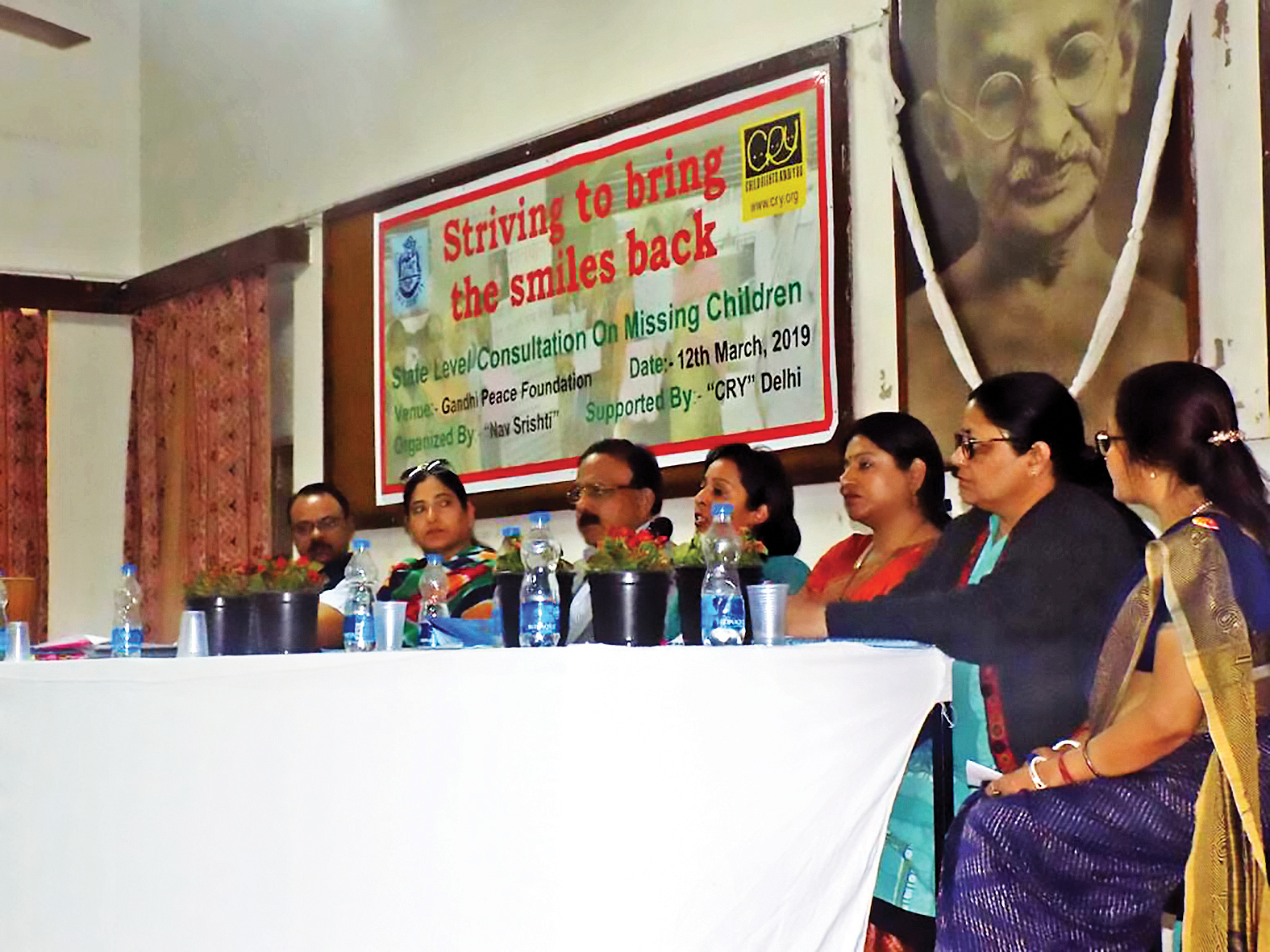A conference was recently held in the Capital to discuss the issue of missing children, child trafficking and the different measures that can be adopted to deal with the menace
On a seemingly ordinary day, March 12, a discussion of mammoth importance took place. But there was a surprisingly small audience in attendance. A conference organised by Nav Srishti and CRY (Child Right and You) on the prevention of child trafficking and the different measures to locate missing children in and around Delhi.
The panel of speakers consisted of DCP of Crime Dr Joy Tirkey, DCW member Promila Gupta, member of DCPCR Samrah Mirza, General Secretary of PRAYAS Amod Kanth, and Ruchika Singla secretary of DLSA, north-west district. At this conference, Tirkey identified a few hotspots from where children routinely go missing – Shahdara Dairy, Aman Vihar, Sangam Vihar, Vijay Vihar and a few others. He also mentioned that a large number of children go missing from railway stations. They are put on a train with a ticket, they fall asleep and wake up in a different city. He stresses heavily on how the common man also has to be constantly vigilant to curb the issue of missing children.
The police are now equipped with a facial recognition software, the prototype for which was created by some IIT students at their start-up. It matches pictures of already missing children with pictures that are in the system. “Aap log taakatwar baniye, hum aapke saath hai,” he reassures.

Sometimes the efforts pay off. A case in point is Rahul*, 13, who went missing from his home in Sultanpuri on February 2, earlier this year. His mother, who runs a beauty parlour, came home from work to find her son gone. She immediately consulted with a Nav Srishti staff member, and on their advice approached the Sultanpuri police station. Her missing child’s complaint had been denied by the Sultanpuri police station, and they were asked to then go to the one in Raj Park.
After a long conversation with Rahul’s mother, it was uncovered that she used to regularly pressurise her son to study harder. And it was concluded that Rahul had run away of his own accord to escape his mother’s scolding. Thankfully, Rahul had a mobile phone, which had for a long time been unreachable. What worried the authorities however, was that Rahul had also fled with some cash in his pocket. The next day, when the investigation into his disappearance had begun, and his phone number was being tried repeatedly, he received the call. And after much convincing on the part of the police, Rahul agreed to return home. Turned out, that he had in fact run away, and had plans of going and living with his aunt in Rajasthan.
In 2017 alone, of the 3,451 children that went missing from nine districts of Delhi, a solid 900 of them were never traced. And as for 2018, the number was 3,602 children from 18 districts, and the police were able to trace 959 of them and return them to their families.
As Assistant General Manager of CRY, Jaya Singh moderated the discussion and took questions from the audience, it was refreshing to see the ardour with which the people in attendance were stating their opinions and airing their problems, regardless of the small number. There were NGO staff members, officials from the AHTU, members of the CWC, as well as some rescue children who now volunteer with the NGOs. These people who work at the very ground level, and deal directly with the children, spoke at length about how hard they try to relocate the children to their families, or to rescue them from a life on the streets.
But the buck stops, or at the very least, gets stretched out and delayed, because of the red tapes in between. Many worried parents complain of how the police officers (SHOs or IOs) tend to not take them seriously. An AHTU worker spoke up about how he was treated badly at the CWC offices, when he went with a Childline official to locate the parents of a child they had found on the streets. The child happened to have a phone number written on his arm. The CWC official proceeded to then defend himself publicly for the next ten minutes, passing the blame on to someone else in the chain of action.
It turns out that despite having well-meaning workers toiling at the ground level — the NGO staff members, or the volunteers and workers at the DCW — those that facilitate the latter steps of the process are not as eager. Or perhaps, are not facing the same accountability. Clearly, the steps implemented by the Delhi Police, or the initiatives introduced by various governmental organisations like Project Smile and Project Milaap, while helpful, cannot guarantee that every cog in the machine will work according to plan.
There seems to be no way to hold the people in the middle responsible for the statistics of missing children today. The discussion at the conference while highly enlightening, seemed to go round and round once the question-answer session started. Very real and relevant question were being posed by the people of action, who were sitting in the audience, to the people with power, who were sitting on the panel. And almost every question ended with the panel stating that the provisions are either already in place or are soon to be launched – and so the failings in the process are a byproduct of simply the magnitude of the problem of missing children. The situation is grim and the numbers are bound to reflect the same. It comes to mind, however, that very few of the people who were actually to blame were not in attendance at all.
All over the country, 30 per cent of the missing children were untraceable. In Delhi, however, the number was at its highest, with 63 per cent of children untraced (as reported in the data tabled by the Ministry of Women and Child Protection in Parliament).
Recently, a 3-year-old boy, Prakash*, was found by a group of young teenagers, wandering around a public toilet and crying for his mother. These vigilant teenagers did not have a phone with them, and arrived with Prakash at the Nav Srishti office, and proceeded to contact the child helpline and the police station of the area. The youngsters, along with Prakash and the NGO staff member, toured the neighbouring areas, making announcements at temples and mosques on microphones, and asking around about missing children. Until finally, the parents were located — and the child was handed over to his parents after confirming their details in the presence of a police official.
The numbers of missing children are dropping at a snail’s pace, but we must be thankful for small wonders. The number of NGOs and the more active role that the police are playing with their new initiatives has been a solid step up, in the quest to protect the children of Delhi. However, it stands to reason that a well-oiled, smoothly functioning system cannot be expected in the near future, without every individual involved in the process being accountable and personally responsible for every child’s case that passes their desk.
*names changed





